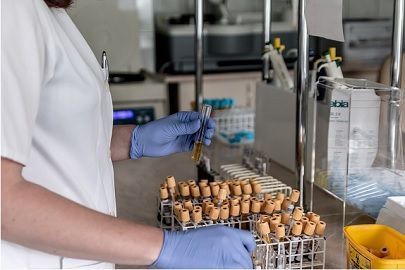When the process of sterilization is carried out at high -pressure through water (steam) it is called as moist heat sterilization, on the other hand, dry heat sterilization is carried out at high temperature under dry condition.
The best way to kill microbes is through ‘heat‘, as it destroys their proteins as well the enzymes present in them. So sterilization (destroying or killing the microbes) process follows this principle of killing microbes, which can be either by giving wet (moist) heat or dry heat.
As their name suggests, both the methods have the different mechanism of working to sterilize the types of equipment and it depends on the type of equipment to be sterilized. So this article is to know about the few, though important differences between the moist heat sterilization and dry heat sterilization.
Content: Moist Heat Sterilization Vs Dry Heat Sterilization
Comparison Chart
| Basis for Comparison | Moist Heat Sterilization | Dry Heat Sterilization |
|---|---|---|
| Meaning | Sterilization involving lower temperature and high-pressure of water (steam) is known as Moist Heat Sterilization. | Sterilization involving the dry air of higher temperature and for the longer time is known as Dry Heat Sterilization. |
| Process requires | As the name says, it needs steam and water. | There is no use of steam and water. |
| Sterilization is done by | Coagulating protein of the microbes very effectively. | Oxidation of the protein and other chemical bonds present in microbes. |
Other requirements | This process is performed under pressure. | It is performed on direct flame. |
| Autoclaving and Boiling come under moist heat sterilization. | Incerination, Bunsen burner (flame), hot air oven and microwave comes under dry heat sterilization. | |
| Required time to complete the process | Moist heat sterilization takes less time. | This process takes more time comparatively. |
Definition of Moist Heat Sterilization
Moist heat sterilization has its importance for sterilizing instruments like custom trays. In this type of sterilization the autoclave is used, where the pressure of the steam with relatively high temperature (though lower than the dry heat sterilization) is used.
In this method, the moist heat (steam) sterilize the equipment by denaturating the enzymes and the structural proteins of the harmful microbes present on the equipment and thus killing them. The moist heat destroys the proteins of the microbes by coagulating them. The required timing is about 15 minutes with the temperature of 121°C.
Advantages of the Moist Heat Sterilization
- Requires low temperature.
- Less time to complete.
- Easy to control and monitor.
- Low cost, non-toxic.
Disadvantages of the Moist Heat Sterilization
- The heat-sensitive instrument cannot be sterilized.
- After sterilization, the instrument remains wet, which may lead to rust.
- Chances of getting instrument damaged, due to repeated exposure.
Definition of Dry Heat Sterilization
Dry heat sterilization is one of the old technique to sterilize the glassware and other equipment. In this method, heated air of high temperature and further the process is same as that of conduction method. Heat is absorbed from the surrounding area of the equipment and is moved forward to the next layer, and slowly the whole equipment gets heated and attains sterilization. The time may vary from 1 hour to 2 hours along with the temperature of the 160°C to 170°C respectively.
The temperature is higher than the moist heat sterilization process; there are more chances of the microbes to get the kill. Incineration, the high flame are the different types of processes performed under dry heat sterilization.
The oxidation process is involved to destroy the microbes. Though this method takes longer time than the moist heat sterilization as due to the absence of water, high energy is required to break the peptide bonds of the proteins present in the microbes.
Advantages of Dry Heat sterilization
- Reliable, nontoxic.
- Low cost and is easy to install.
- As the instrument remains dry after sterilization, there are no chances of corrosion.
- Not harmful to the environment.
Disadvantages of the Dry Heat Sterilization
- It requires more time for sterilization.
- Exposure to the higher temperature may be harmful to the instrument.
Key Differences Between Moist Heat Sterilization and Dry Heat Sterilization
Given below are the points which present the key differences between the Moist Heat and Dry Heat Sterilization:
- Sterilization involving lower temperature and high-pressure of water (steam) is known as Moist Heat Sterilization, on the counterparts sterilization including the dry air of higher temperature and for the higher time is known as Dry Heat Sterilization.
- In the moist heat sterilization coagulation of protein and enzymes of the microbes are done very effectively, it also takes less time whereas in dry heat oxidation denaturation or killing of microbes is done by the process of oxidation of the protein and other chemical bonds present in microbes, and it takes more time to complete.
- Autoclaving and Boiling come under moist heat sterilization, while Incineration, Bunsen burner (flame), Hot air oven and Microwave comes under dry heat sterilization.
Conclusion
From the above article, we conclude that both are the acceptable process and can be performed according to the requirement and the conditions of the equipment to be sterilized.


CHRISPINOS OUNDO says
Great work indeed ..thanks
DEBORAH ASAMANY says
Wonderful piece here…thanks